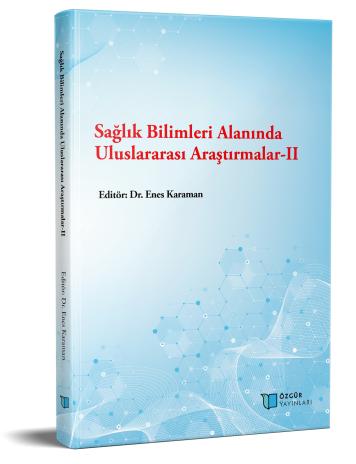
Anormal Uterin Kanamalarda Yaklaşım
Şu kitabın bölümü:
Karaman,
E.
(ed.)
2023.
Sağlık Bilimleri Alanında Uluslararası Araştırmalar-II.
Özet
Uterin kanamalar, menarş döneminden menapozal döneme kadar, gebelik dönemleri hariç, hormon etkisi altında olan endometriumun organizsyonu ile belli peryodlarda olması beklenen kanamalardır. Anormal uterin kanama (AUK) olarak adlandırılan kanamalar ise miktar ve sıklık açısından düzensiz seyreden kanamalara denir (2). AUK reproduktif zamanlarda daha az görülürken, perimenapozal zamanlarda daha sık görülmektedir (2). AUK şikayeti olan bir hastada, kanama sebebine yönelik patolojilerin değerlendirilmesi gerekir. Altta yatan patolojinin tanısının koyulması, tedavinin belirlenmesi açısından önemlidir. Değerlendirme sonucu, kanama nedeni olarak bir patolojiye rastlanmazsa medikal tedavi seçenekleri tercih edilebilir. Hormonal veya hormonal olmayan medikal tedavilere cevap beklendiği şekilde gelişmezse, cerrahi tedavi seçenekleri de denenebilir. Cerrahi yaklaşım hastanın durumuna göre törepatik küretaj, endometrial ablasyon, histerektomi gibi seçeneklerdir. Histerektomi prosedürü uygulanan hastaların % 20’ si medikal tedaviye yeterli yanıt alınamayan uterin kanama endikasyonu ile yapılmaktadır. Menorajiye yönelik tedavi gören kadınların % 80’ inde anatomik bir patoloji bulunmamaktadır; bu nedenle histerektomi yapılan kadınların üçte birinde uterus anatomik olarak normal bulunmuştur (3). Medikal tedavinin, uygulanan cerrahi tedavileri ve dolayısıyla bu cerrahilere sekonder gelişen komplikasyonları önlemede önem kazanmaktadır (4).Histopatolojik örneklemenin sonucuna göre bir takip ve tedavi şeması belirlenir.

